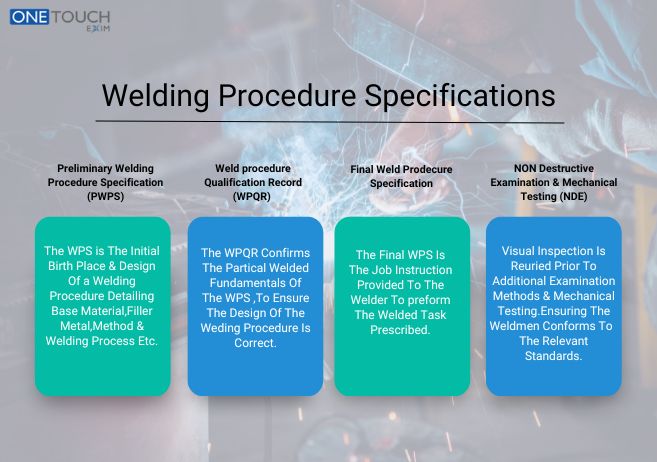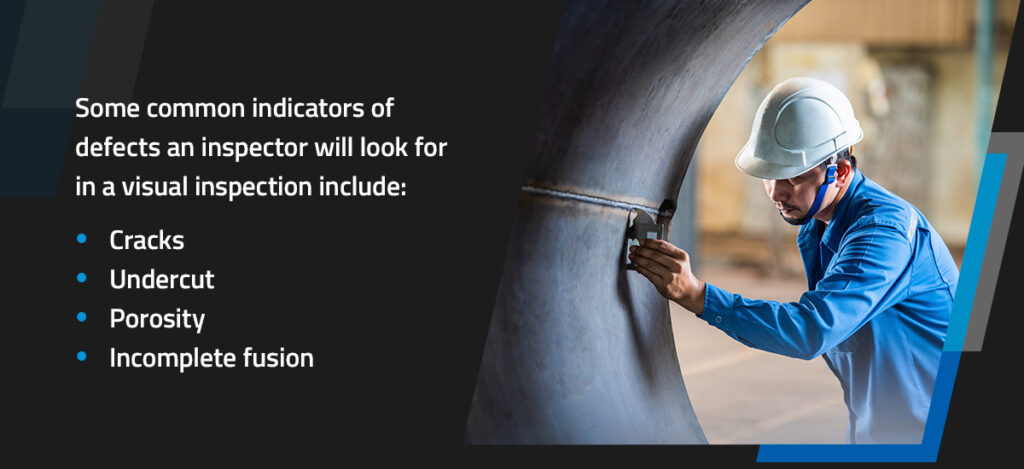Why You Required Expert Welding Inspection Racine for Your Projects
Why You Required Expert Welding Inspection Racine for Your Projects
Blog Article
Innovative Approaches to Fillet Weld Evaluation and Screening: Enhancing Weld Top Quality and Compliance Specifications
In the realm of welding, the top quality and integrity of fillet welds play an essential duty in guaranteeing the structural strength and integrity of various commercial parts. With the continuous drive for enhanced performance and conformity with strict criteria, the expedition of ingenious strategies to fillet weld inspection and testing has actually become vital. As industries develop, the traditional methods may no longer suffice in satisfying the needs of modern-day welding applications. By accepting sophisticated innovations and techniques, a new horizon of possibilities emerges in the realm of weld top quality assessment and adherence to conformity standards.
Advanced Non-Destructive Screening Approaches
Making use of cutting edge modern technologies, progressed non-destructive screening techniques play an essential role in ensuring the stability and top quality of fillet welds. These methods, such as phased array ultrasonic screening (PAUT) and magnetic bit testing (MPT), deal thorough understandings right into the weld's inner framework without creating any damage to the material. PAUT, as an example, utilizes multiple ultrasonic elements to evaluate the weld from numerous angles, offering a comprehensive visualization of prospective issues like absence of fusion or cracks.
By employing these advanced non-destructive screening methods, weld assessors can precisely assess the quality of fillet welds, making certain compliance with industry criteria and guidelines. The ability to identify flaws early on not only improves weld top quality however likewise prevents costly rework or failings in architectural stability, highlighting the importance of these innovative screening methods in welding examinations.
Robotics and Automation in Evaluation
The combination of robotics and automation has revolutionized the examination process for fillet welds, improving effectiveness and accuracy in high quality assessment. Robotics supply exact control and repeatability in evaluating welds, making certain trusted and regular results. Automated systems can be programmed to follow particular inspection paths, making sure complete coverage of welds and minimizing the danger of human error.
Robot assessment systems furnished with advanced sensing units can detect and measure weld features with high precision, giving detailed data for analysis. These systems can determine defects such as cracks, absence of combination, and porosity, allowing timely corrective actions to be taken. Furthermore, robotics and automation enable real-time information collection and evaluation, giving prompt feedback to drivers and helping with quick decision-making processes.
Additionally, the use of robotics and automation in fillet weld examination enhances total productivity by lowering evaluation times and boosting examination throughput. By enhancing the inspection process, suppliers can guarantee weld quality and conformity standards are satisfied successfully, ultimately causing set you back savings and enhanced product high quality.
Making Use Of Expert System for Evaluation
Fabricated knowledge plays a critical duty in boosting the effectiveness and accuracy of analysis in fillet weld evaluation procedures. AI formulas can rapidly process substantial quantities of data from weld examinations, detecting flaws or inconsistencies that might be testing to recognize with the nude eye - Welding Inspection Racine.
In addition, AI systems can gain from past inspection data, constantly enhancing their capability to determine possible defects and inconsistencies in fillet welds. This flexible learning capacity boosts the overall quality assurance procedure, lowering the possibility of human error and ensuring that welds fulfill the required standards. By integrating fabricated knowledge into fillet weld analysis, markets can achieve higher levels of effectiveness, uniformity, and conformity in their evaluation methods.
Portable Devices for On-Site Inspection
 Enhancing area evaluation efficiency, the adoption of mobile tools reinvents on-site assessment processes for fillet welds. These devices use flexibility and comfort, allowing examiners to conduct extensive assessments in different places, consisting of challenging or remote environments. Mobile devices such as ultrasonic testing tools, magnetic fragment examination tools, and electronic radiography systems provide real-time information and high-resolution imaging capacities, making it possible for quick decision-making and immediate comments on weld top quality.
Enhancing area evaluation efficiency, the adoption of mobile tools reinvents on-site assessment processes for fillet welds. These devices use flexibility and comfort, allowing examiners to conduct extensive assessments in different places, consisting of challenging or remote environments. Mobile devices such as ultrasonic testing tools, magnetic fragment examination tools, and electronic radiography systems provide real-time information and high-resolution imaging capacities, making it possible for quick decision-making and immediate comments on weld top quality.One considerable advantage of portable devices is their capacity to improve examination procedures, lowering downtime and Discover More improving overall efficiency. Inspectors can conveniently transfer these tools to various task websites, getting rid of the demand for carrying heavy machinery or parts to off-site facilities. In addition, the mobility of these tools promotes cost-effectiveness by decreasing transportation costs and increasing evaluation timelines.
Furthermore, the use of mobile devices for on-site evaluation promotes aggressive quality assurance measures, as examiners can promptly recognize and address any kind of prospective welding flaws or discrepancies. By integrating these innovative innovations right into on-site examination methods, welding experts can guarantee compliance with sector requirements and improve weld top quality, eventually causing enhanced structural stability and safety in various welding applications.
Integration of Information Management Solution
Having maximized on-site examination processes with the application of mobile devices, the next stage involves the seamless assimilation of information management systems to even more enhance efficiency and data evaluation capabilities in fillet weld assessment and testing. Welding Inspection Racine. By incorporating information management systems into the assessment process, organizations can improve information collection, storage space, and evaluation. This integration enables real-time surveillance of weld quality, prompt identification of problems, and timely decision-making to remedy any kind of problems that might occur during the examination process
The integration of data administration systems allows seamless communication between different stakeholders involved in the assessment procedure, fostering cooperation and boosting total high quality control measures. Eventually, the integration of information management systems offers to boost the standards of fillet weld evaluation and testing, making sure compliance with market policies and improving weld quality.
Final Thought
Finally, innovative strategies to fillet weld assessment and testing have significantly improved weld top quality and compliance criteria. Advanced non-destructive testing approaches, robotics, automation, expert system, mobile devices, and information management systems have revolutionized the means weld examinations see this are carried out. By making use of these innovations, sectors can guarantee that welds satisfy the needed quality standards and regulations, ultimately improving general performance and safety and security in welding processes.

By employing these advanced non-destructive screening strategies, weld inspectors can accurately analyze the quality of fillet welds, making sure compliance with industry requirements and regulations. Portable devices such as ultrasonic screening devices, magnetic particle evaluation devices, and electronic radiography systems supply real-time data and high-resolution imaging capacities, making it possible for fast decision-making and prompt responses on weld high quality.
Having enhanced on-site inspection procedures with the usage of portable tools, the next phase entails the smooth assimilation of information monitoring systems to additionally boost performance dig this and information analysis capacities in fillet weld evaluation and screening (Welding Inspection Racine). Ultimately, the integration of data management systems serves to elevate the criteria of fillet weld assessment and screening, making certain conformity with sector guidelines and improving weld quality
 In final thought, ingenious techniques to fillet weld assessment and testing have significantly improved weld top quality and compliance standards.
In final thought, ingenious techniques to fillet weld assessment and testing have significantly improved weld top quality and compliance standards.Report this page